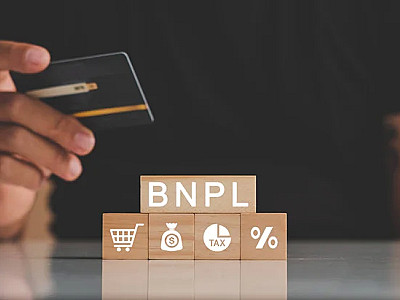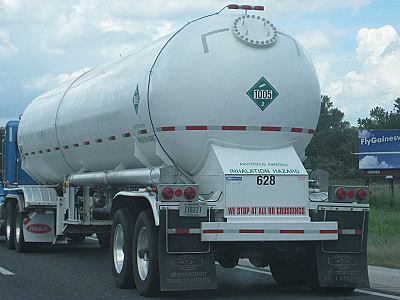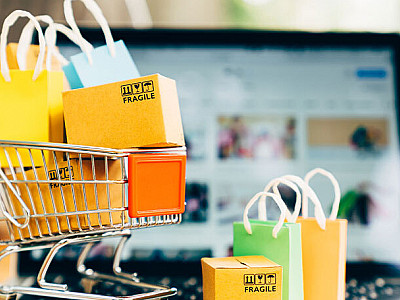Understanding the Opportunities of Insurance in Indonesia
An overview of the current trends within Indonesia's insurance industry.



From credit cards to lay ways, now customers are being introduced to a new payment option: buy now, pay later or also widely called as BNPL, and it seems to be surging in popularity across the globe.
To put it briefly, BNPL is considered to be a short-term financing that allows customers to make purchases and pay for them at a later time without a credit card. These payments can be paid in installments within a monthly range. Forbes has stated that BNPL resembles a personal loan, and are often interest free as long as a customer make their payments on time and in full.
According to a 2022 report by SurveySensum, BNPL applications in Indonesia have grown by around 45% in the past year, resulting in 55% of 300 e-commerce partaking in the survey have reported to using BNPL as a payment option.
To consider utilizing this alternative payment option, it is best to familiarize ourselves with the ins and outs of the BNPL sector and the trends surrounding it. During a Q&A call session with one of our advisors, Ms. N, was able to share a couple of insights to help us understand better on some of the things BNPL players focus on when it comes to the Indonesian market. Below is a condensed and edited summary of the call session from earlier of last year as part of our expert network Indonesia.
For the bigger BNPL players, they definitely have around 40-65 million users now. Maybe before the pandemic it might have dropped to below 50 million, but since the situation has been getting much better, now companies can go back to utilizing offline products. Additionally, by leveraging from how easy QRIS is, BNPL players don’t need to actually find and connect with a merchant, so in a way from a customer’s perspective, not only can BNPL applications be easy to use, there is also the incentive of getting credit assessment from paying via their downloaded apps through QRIS. For instance, one BNPL product got around 5000 orders of cinema tickets through their app. Let’s not forget to target B2B and their offline transactions, which can be one of the biggest drivers of users in 2nd and 3rd tier cities, and are actually considered to be the more untapped users for BNPL products
Basically, we can analyze their payment method. If a user repays via electronic money or virtual accounts, then of course they would need a bank account to recharge their account balance. From there, we can see that 60% of BNPL users have bank accounts, and the remaining 40% of users don’t actually own bank accounts. The 40% here do their repayment via cash at convenience stores, such as Indomaret and Alfamart. Something that we should take into consideration is that these numbers are just estimation, because the reality is there are some BNPL users who do own bank accounts but are too scared to input this information due to fear and misconception that BNPL services have the authority to conduct auto debit on the user’s account, even though this is of course very much false.
Before the pandemic let’s say a user has 700-750 credit scoring, then okay we can still give them a pass but with a lower limit, and we’ll observe the user’s behavior over a period of time before we can increase or give them more credit limit. Then, when the pandemic hits and the border closes, BNPL players have shifted their strategy. Now only those with 800 or higher credit scoring will be given a pass, because it wouldn’t make sense to follow and grant sub-prime users. Of course, each BNPL company’s strategies differ, but this may be the overall trend.
Additionally, the main goals for most BNPL players are of course lowering non-performing loans and driving more GMP, so there are a lot of negotiations happening between the company’s risk & business team and let’s say e-commerce platformers. This is because sometimes there are actually multiple BNPL players on these platforms. So, from the e-commerce side they will actually choose which BNPL players will be much more promoted to certain users, and the others for a different group of users and so on. In return, BNPL companies will either increase or decrease the success rate. In this case, higher success rate means companies will be giving more questionable users successful transactions which will most likely result in higher NPL since they will fail to pay. It all comes down to the negotiations and balancing out the given success rate.
There are 3 main challenges. The first one being limited information and how unsystematic it is. Since Indonesia currently has no actual credit system, many multi-finance companies have to develop and build their own, which requires a big data analysis team and so on. Next, there is regarding the number of full time workers in Indonesia. Overall, the number is not that impressive, and as a result BNPL players have to do a lot of trial and error to understand the market and the right approach in order to get a piece of this market while still staying profitable.
Last but not least, is the prevalent issue of fake information. A lot of Indonesian users actually use fake IDs, which increases the cost of manual underwriting.
Indonesia remains to be the biggest market within the Southeast Asia region, and in terms of profitability, it really depends on how long a BNPL player has been in the market. Additionally, the rate of non-performing loan in Indonesia is actually much better than Vietnam and Malaysia, so again, it really depends on which phase of the market a BNPL player is currently in for them to really stop burning money.
On top of that, what’s interesting with Indonesian consumers is that even though let’s say a user states that they are a housewife, and as a result maybe in the beginning BNPL companies will give the user a low limit. Surprisingly, the BNPL company will start to see just how high the user’s purchasing power actually can be. So, this type of behavior is quite prevalent amongst Indonesian people since sometimes the account may under one person, but it is actually being used by their entire family.
Contact us to explore more about the current trends of the industry and be connected with our expert network Indonesia.
Subscribe to our newsletter, and stay updated on the latest insights to various industries.
About Ms. N:
Currently, Ms. N handles various divisions within the company. This includes business development, public relations, and product research. After working for 2 years in her current role, Ms. N is knowledgeable in NPL calculation, characteristics of loaner segmentation, and metrics of credit rating.
With a focus on product, marketing, and operations, Ms. N is ready to assist you in exploring more about digital finance from various perspectives.
We will give you updates of our latest news
An overview of the current trends within Indonesia's insurance industry.

One of Askpert's advisors had the opportunity to share his insights about the expedition industry.

Ammonia is one of the new green energy technologies to curb emissions. Mr. DF, a specialist in the ammonia manufacturing sector, provided us with insights into the expansion of the ammonia industry in Indonesia.

Our advisor shares insights on how ecommerce enablers have been helping brands in Indonesia.
